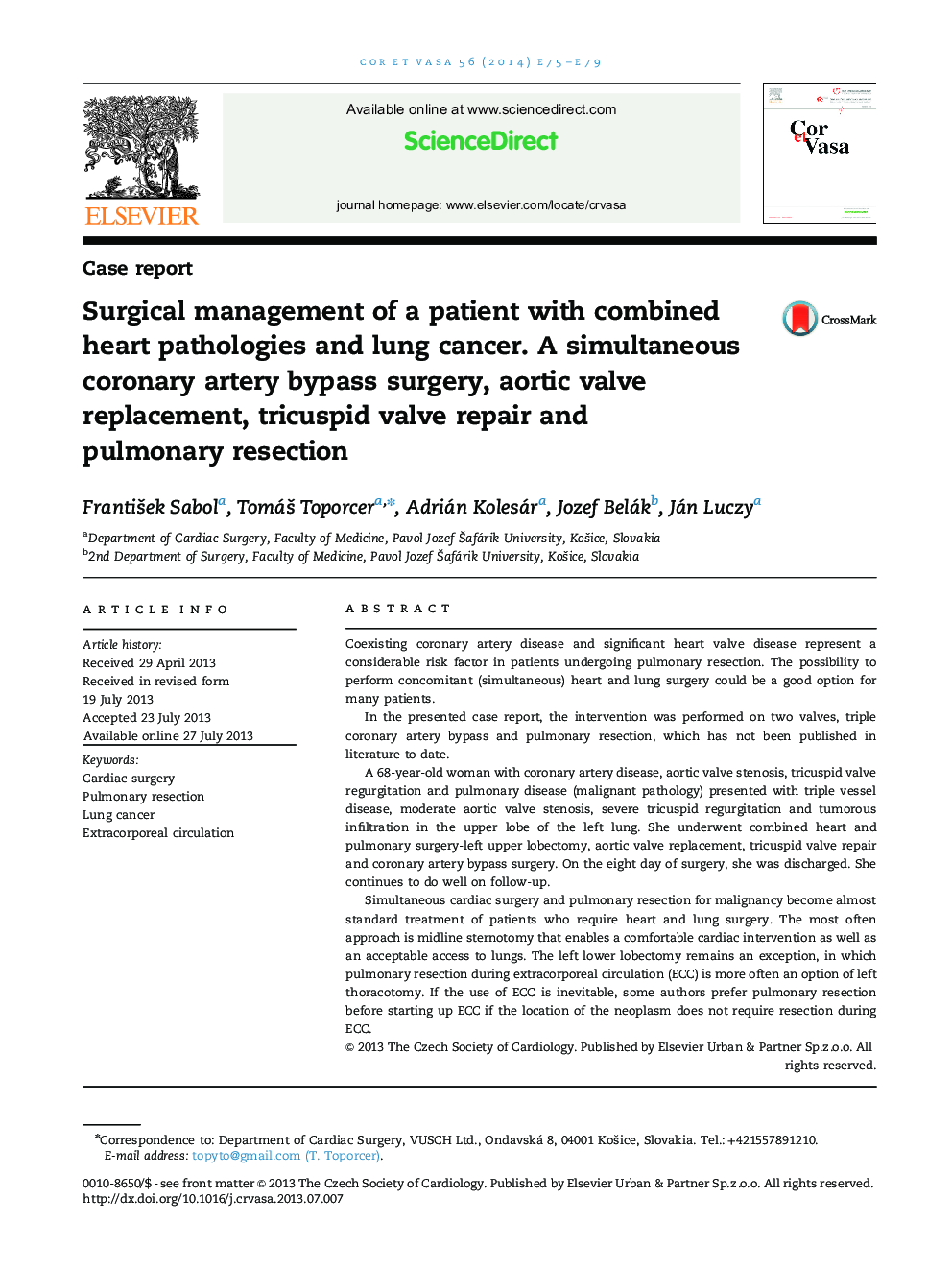| Article ID | Journal | Published Year | Pages | File Type |
|---|---|---|---|---|
| 5879888 | Cor et Vasa | 2014 | 5 Pages |
Coexisting coronary artery disease and significant heart valve disease represent a considerable risk factor in patients undergoing pulmonary resection. The possibility to perform concomitant (simultaneous) heart and lung surgery could be a good option for many patients.In the presented case report, the intervention was performed on two valves, triple coronary artery bypass and pulmonary resection, which has not been published in literature to date.A 68-year-old woman with coronary artery disease, aortic valve stenosis, tricuspid valve regurgitation and pulmonary disease (malignant pathology) presented with triple vessel disease, moderate aortic valve stenosis, severe tricuspid regurgitation and tumorous infiltration in the upper lobe of the left lung. She underwent combined heart and pulmonary surgery-left upper lobectomy, aortic valve replacement, tricuspid valve repair and coronary artery bypass surgery. On the eight day of surgery, she was discharged. She continues to do well on follow-up.Simultaneous cardiac surgery and pulmonary resection for malignancy become almost standard treatment of patients who require heart and lung surgery. The most often approach is midline sternotomy that enables a comfortable cardiac intervention as well as an acceptable access to lungs. The left lower lobectomy remains an exception, in which pulmonary resection during extracorporeal circulation (ECC) is more often an option of left thoracotomy. If the use of ECC is inevitable, some authors prefer pulmonary resection before starting up ECC if the location of the neoplasm does not require resection during ECC.
